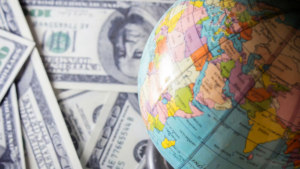Goa: About
Goa is located on the south-western coast of India. It falls under the Konkan region, geographically separate from the Deccan Highlands by the Western Ghats. It shares its borders with Maharashtra and Karnataka. It is surrounded by the Arabian sea, which makes the Western Coast of Goa. It is the smallest state by area in India and it ranks as the fourth-smallest by population. Among all the Indian states, Goa has the highest GDP per capita and makes up Two and half times as high as the GDP per capita of the country.
The state ranks third among all the Indian states on the Human Development Index. Goa is named the best-placed state by the Eleventh Finance Commission of India because of its beautiful infrastructure and it is named a place providing the best quality of life in India by India’s National Commission on Population. Goa is highly influenced by Portuguese culture and Margao, a historic city of Goa still exhibits Portuguese culture. Goa is visited by a large number of international and domestic tourists every year. The beaches, active nightlife, worship places, and architecture attract most of the tourists.
Countries Capital and Currencies
Goa: History
- Goa was the part of Mauryan Empire during the 3rd Century BC, which was ruled by Ashoka of Magadha.
- During the 2nd Century BC and the 6th Century AD, the Bhojas of Goa ruled over Goa.
- Chutus of Karwar also ruled some parts of the Satavahanas of Kolhapur, Western Kshatrapas, the Abhiras of Western Maharashtra, Bhojas of the Yadav clans of Gujarat, and The Konkan Mauryas of the Kalachuris.
- The rule was then passed to the Chalukyas of Badami between 578 to 753. Later, the rule was passed to Rashtrakutas of Malkhed between 753 to 963.
- The southern Silharas of Konkan ruled Goa as the feudatories of the Chalukyas of Kalyani. During this period, they patronized Jainism in Goa.
- The Delhi Sultanate took over Goa in 1312. However, the Delhi Sultanate was forced to surrender itself to Harihara I of the Vijayanagara Empire.
- The Vijayanagara Empire held on the Territory until 1468 when it was appropriated by the Bahmani Sultans of Gulbarga.
- The dynasty was soon demolished and the area was taken over by the Adil Shahis of Bijapur, who established the capital of the city known under the Portuguese as Velha Goa.
- The Portuguese Colonial Rule was established in Goa when in 1510, the Portuguese defeated the ruling Bijapur Sultan Yusuf Adil Shah with the help of a local ally, Timoji.
- The Portuguese Colonial Rule lasted for four and half centuries until its annexation by India in 1961.
- Goa was composed of two segments, the central nucleus of the Velhas Conquistas- Bardez, Ilhas de Tiswadi, and Salsete, which territories have been under the Portuguese administration since the sixteenth century.
- In 1843, the Portuguese moved the capital to the Cidade da Nova Goa and today it is known as Panaji from Velha Goa.
- During mid-18th Century, the Portuguese expansion lost other possessions in India until their borders stabilized and formed the Goa, Daman, and Diu which included Silvassa before the Annexation.
- It was known as Estado da India in Indo-Portuguese, that is the “State of Portuguese India.”
Goa: Things you need to know
- The capital of Goa is Panaji.
- The largest city of Goa is Vasco da Gama.
- The official language of Goa is Konkani.
- The Chief Minister of Goa is Pramod Sawant and the Governor is P.S. Sreedharan Pillai.
- Goa covers an area of 3702 Km2 and it is the smallest state in India.
- More than 33% of the geographical area of Goa is under the government forests out of which 62% has been brought under the Protection Area of Wildlife Sanctuaries and National Parks.
Goa: Geographical Facts
- Goa lies between the latitudes 14°53’54” N and 15°40’00″N and longitudes 73°40’33″E and 74°20’13″E.
- There are seven major rivers in Goa, namely, Zuari, Mandovi, Terekhol, Chapora, Galgubag, Kumbarjau canal, Talpona, and the Sal.
- The soil found in Goa is made up of laterites rich in Ferric-Aluminum oxides and it is reddish.
- Goa’s climate is a Tropical monsoon climate. It has a hot and humid climate all the year and the month of May is the hottest which is over 35°C.
- The average rainfall received by this state is over 90%.
Buy Prime Test Series for all Banking, SSC, Insurance & other exams







 States and Capitals - How Many States in...
States and Capitals - How Many States in...
 Top-10 Happiest States in India in 2025,...
Top-10 Happiest States in India in 2025,...
 Top-5 Richest Countries in South America...
Top-5 Richest Countries in South America...

